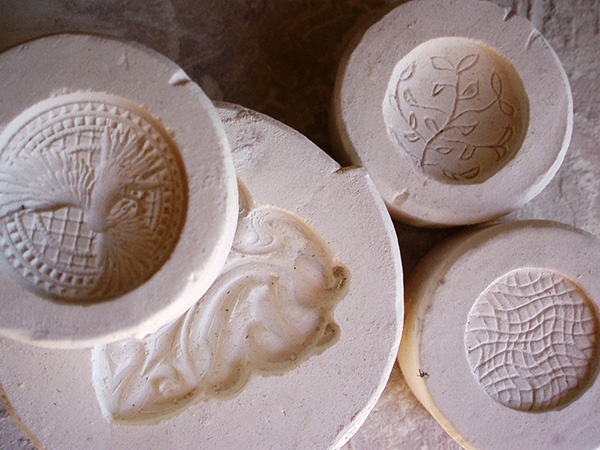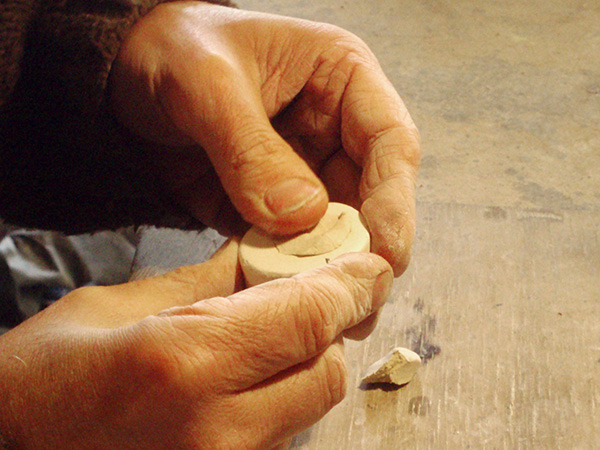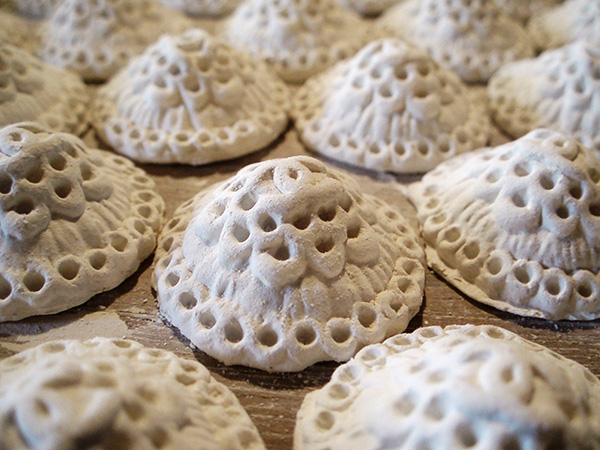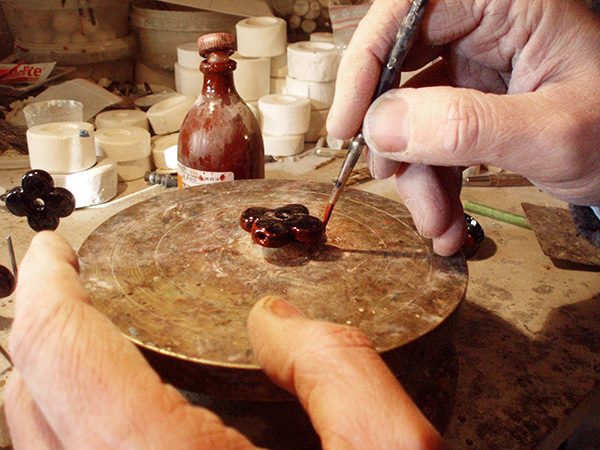Buttons and Cabochons are hand-stamped. The pigments, enamels, lustres and crystals are all applied by hand.
Multiple firings (2 to 5 for the most intricate pieces) guarantee a glassy finish, rendering the finished piece completely waterproof and ensuring the stability and permanence of the colors and enamels over time.
Our mastery of this technique allows reproduction of a design in different sizes, with a surprisingly lightweight result.
Our finished pieces provide a final touch of brilliance to your work, the quality and finish of a true luxury product.
History of Ceramic Buttons in France
In the 18th century, the discovery of Kaolin in the Limousin region of France enabled the development of a luxurious new ceramic : « hard » Porcelain. In the city of Sèvres, a small factory begins production of the « Porcelaine Royale » in its own kilns, veritable masterpieces of decorative art.
In Sèvres, this industry was provided royal support and sponsorship by Napoleon himself. Enthusiasm for this new technique and style led was so strong that industrial production was launched in the cities of Limoges and Vierzon.
New colors and finishes require the development of rare types of firing, standard forms begin to emerge, and enamels from the Limousin region witness a rebirth in popularity. It becomes standard practice to manufacture pieces outside of Paris and have them decorated in Paris.
Porcelain is now widely used and porcelain mother-of-pearl buttons or hand-painted and enamelled buttons are worn by men and women alike.
Artisanal button-makers transform it into myriads of shapes and sizes to adorn fashions, producing maginificent miniature scenes with ivory inlay or accented with feathers encased in glass.
A Porcelain button tells tales, seduces and speaks of love. The industrial revolution has allowed these works of art a place in everyday modern life.
For the last 30 years, Yann Petillault’s work has been the last to uphold this tradition of French Porcelain buttons in France.



